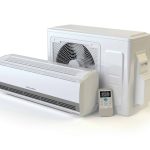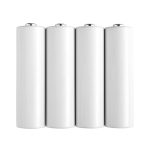Introduction
When the biting cold kicks in, and the ice-glazed roads become unsafe for your two-wheel ride, winter storage for your Honda Rebel 500 becomes a necessity. However, there’s an often-overlooked aspect: the pesky matter of fuel system clogging. Storing your motorcycle for an extended period can lead to fuel degradation, especially if it’s left in the tank. This can result in residues that clog your engine parts, causing serious damage that may be expensive to repair.
Also to read : How frequently should I replace the battery in a Zero DSR electric motorcycle to ensure optimal performance?
The good news is, such an unfortunate scenario can be avoided with the right preparation and care. This comprehensive guide will walk you through how to prevent fuel system clogging in your bike during winter storage, to ensure a hassle-free ride when the spring sun shines again.
Properly Cleaning the Gas Tank
As a motorcycle owner, you’ll agree that the fuel tank is one of the most crucial components. It houses the gas that powers your ride and, as such, its maintenance is paramount. So, what’s the first step in preventing clogging during winter storage? Cleaning the fuel tank.
Have you seen this : What are the important safety tips for replacing the swingarm bushings on a Yamaha R6?
Fuel residue or rust in the tank can mix with the gas over time and create a sludgy substance that will eventually clog your engine. But with proper cleaning, you can completely eliminate this risk. This process involves emptying the tank, using a fuel tank cleaner and high-pressure air to remove any grime, rust, or residue.
It’s also recommended to add a layer of motorcycle tank liner, which acts as a protective layer, reducing the risk of rusting and potential clogging. Remember, an impeccably clean tank is your first line of defence against fuel system clogging.
Ensuring High-Quality Fuel and Oil
The quality of fuel and oil in your motorcycle directly affects the performance and lifespan of your engine. Low-quality or contaminated fuel can cause deposits in the carburettor and fuel lines over time, leading to engine clogging.
Before storing your bike for winter, make sure to fill the tank with high-quality gas and add a fuel stabilizer. Fuel stabilizers prevent fuel from breaking down and forming a gummy substance that can block your engine. They will make your bike easy to start when winter is over.
Just as you take care of the fuel, the engine oil also needs attention. If the oil is due for a change, make sure to change it before storage. Used oil contains acids that can corrode engine parts over the storage period.
Employing a Fuel Additive Like Seafoam
Fuel additives are products that you add to your fuel to improve its quality and efficiency. One popular option among motorcycle forums is Seafoam. It’s a petroleum-based product that works well in cleaning and lubricating the fuel system.
Seafoam works by dissolving the deposits from fuel and oil that can clog your bike’s system. It also helps in stabilizing fuel for up to two years, making it an excellent choice for winter storage. Seafoam is safe to use in all gasoline engines.
Regular Starting and Running of the Engine
While it might seem counterintuitive, starting and running your engine periodically during winter storage can help prevent fuel system clogging. This is because it allows the fuel to circulate through the system, preventing any deposits from settling and causing blockages.
Periodically running your engine also helps keep the battery charged. However, it’s essential to let the engine run until it reaches operating temperature. This ensures any condensation in the engine is evaporated, preventing rust and corrosion.
Using a Fuel Cap with a Good Seal
Your fuel cap does more than just cover the tank; it also plays a crucial role in preventing fuel system clogging. What many people fail to realize is that a poor seal allows air and moisture into the tank. Over time, this can cause rust, which, when mixed with fuel, can block your engine.
Before storing your bike for winter, it’s crucial to inspect your fuel cap for any signs of wear or damage that could compromise the seal. If it’s not in good condition, consider replacing it with a new one. A well-sealed fuel cap will keep out air and moisture, helping protect against rust and fuel degradation.
In conclusion, proper winter storage of your Honda Rebel 500 goes beyond just covering it up and tucking it away. Paying attention to the fuel system can save you a great deal of trouble and money when it’s time to ride again. By following these guidelines, you can ensure your motorcycle will be ready and waiting for your next adventure as soon as winter is over.
Using a Fuel Injector and Carburetor Cleaner
A fuel injector and carburetor cleaner is a helpful tool to prevent fuel system clogging in your Honda Rebel 500 during winter storage. Just as the name suggests, this cleaner aids in removing deposits and residues in your fuel injector and carburetor.
The fuel injector delivers the right amount of fuel to your engine, and the carburetor mixes this fuel with air for combustion. Over time, deposits can accumulate in these components, resulting in clogging and inefficient performance.
Before storing your bike, it’s advisable to use a fuel injector and carburetor cleaner. This process involves adding the cleaner to your fuel tank and letting the engine run for a few minutes to circulate the cleaner through the system.
The cleaner works by dissolving deposits and residues, which are then expelled through the exhaust system. This leaves your fuel injector and carburetor clean and efficient, reducing the risk of fuel system clogging during winter storage.
Winterizing Your Motorcycle
The process of winterizing your motorcycle involves a series of steps aimed at protecting your bike from damage during winter storage. Besides preventing fuel system clogging, it’s also crucial to protect other components of your bike.
Firstly, clean your bike thoroughly. Dirt and grime can lead to rust and corrosion if left on the bike during storage. Use a motorcycle cleaner and microfiber cloth to clean all parts, including the wheels, engine, and bodywork.
Secondly, protect exposed parts. Use a rust inhibitor to spray all metal parts of your bike. This helps to prevent rusting during storage. Additionally, treat your leather seat with a leather conditioner to prevent it from drying out and cracking.
Lastly, store your bike on a motorcycle stand or center stand if possible. This takes the weight off the tires, preventing them from forming flat spots. If a stand is not available, consider inflating the tires to their maximum pressure and moving the bike occasionally to ensure the weight is evenly distributed.
Conclusion
Preparing your Honda Rebel 500 for winter storage is a task that should not be taken lightly. By paying attention to your fuel system and ensuring it’s clean and in good working condition, you can prevent the hassles and costs associated with fuel system clogging when you’re ready to ride again. Use high-quality fuel, add a fuel stabilizer, run your engine periodically, and use a fuel injector and carburetor cleaner.
Don’t forget to winterize your bike to protect all its components and ensure it’s in the best condition when the warm weather rolls around. With these guidelines in mind, you’ll be well on your way to having a smooth, enjoyable ride when the winter thaw begins.











